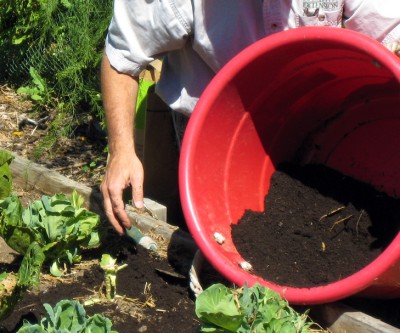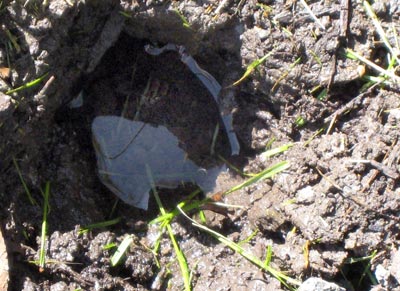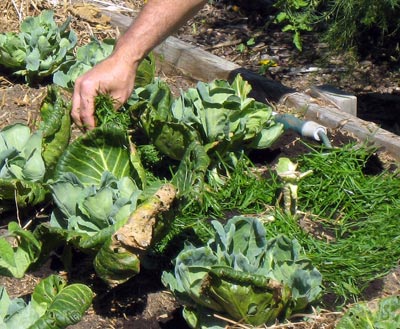
Smart gardens begin with healthy soil
DOWNLOADMay 12, 2016 - Bob Bricault
 Cultivating a robust vegetable garden or a dazzling flower bed starts with healthy soil. Soils are a combination of different-sized mineral particles, organic matter and living organisms. The non-living or mineral part of the soil is made up of sand, silt and clay. Sand is the largest of the three particles and is big enough for us to feel and see. Silt and clay, however, can be over 100 times smaller than sand. The proportion of each of these particles mixed with the living or organic component creates that magical ingredient to gardening success – soil!
Cultivating a robust vegetable garden or a dazzling flower bed starts with healthy soil. Soils are a combination of different-sized mineral particles, organic matter and living organisms. The non-living or mineral part of the soil is made up of sand, silt and clay. Sand is the largest of the three particles and is big enough for us to feel and see. Silt and clay, however, can be over 100 times smaller than sand. The proportion of each of these particles mixed with the living or organic component creates that magical ingredient to gardening success – soil!
What do healthy soils provide to plants?
Some of the beneficial aspects of healthy soils include:
- A physical composition that provides a place for the plant’s roots to anchor.
- A reservoir for essential nutrients and water that promotes plant growth.
- Pore spaces that allow oxygen movement needed for healthy roots, nutrient uptake and support of living organisms.
- Organic matter that sustains the living component of the soil and releases nutrients as it breaks down.
- The promotion of plant health and resistance to disease and decline.
What is healthy soil?
The organic content is a critical key to healthy soil, whether the soil is primarily sand or clay. Clay soils, with their minute particles, have very tiny pore spaces that drain slowly. This slow draining can leave soils saturated with water, reducing space for oxygen. Since oxygen is a key element necessary for growing plants, any soil with poor drainage can lead to damage or death of the plant.
Organic matter acts as glue, holding soil particles together, creating larger pore spaces needed for oxygen and water exchange. Sandy soils often have too large pore spaces between particles, reducing the soil’s ability to hold water and nutrients. Organic matter when added to sandy soil helps to hold moisture and makes nutrients available for plant use.

Too much clay causes soils to drain slower, leaving soils saturated with water and little space for oxygen. Photo credit: Joy Landis, MSU
How much organic matter do I need?
Organic matter in soils can range from 5 percent to as high as 15 percent. Soils with less than 5 percent of organic matter tend to be less productive, often promoting deficiencies in plant tissues. Organic matter can be added to soils through composting, including well-composted animal manure, chopped up leaves, grass clippings and organic mulches, or by planting cover crops.

Grass clippings are another option to add more organic matter in vegetable gardens or flower beds. Photo credit: Joy Landis, MSU
How to determine your soil’s organic matter content, soil pH and nutrients
A soil test from Michigan State University Extension for a home garden will provide a measure of the organic content of the soil as well as information on soil type, nutrients, soil pH and recommendations to improve the soil. An annual application of compost, leaf mold and other material may be recommended to maintain ideal levels of organic matter that is slowly depleted each year by micro-organisms. If the soil has less than 3 percent organic matter, spread about 1 inch of fresh organic matter (3 cubic yards of organic amendment per 1,000 square feet) to help keep levels stable in the soil. Soil test self-mailers and information on how to take a soil test are available at the MSU Soil Test website.
The MSU Extension publication “Advanced Soil Organic Matter Management” recommends using a diverse mixture of organic matter residues which will provide some materials that are slow to break down along with others that release nutrients more easily.
Cover crops or green manures are plants specifically grown as a ground cover to be tilled under while still in a green, vigorous stage to add organic matter and nutrients back into the soil. Legumes like clover and hairy vetch have the ability to fix nitrogen for plant use which adds the nitrogen in organic form back into the soil for future crops. For more information on gardening with cover crops, read the Cornell fact sheet “Improve Your Soil with Cover Crops."
For more information on a wide variety of smart gardening articles, or to find out about smart gardening classes and events, visit the Gardening in Michigan website.



 Print
Print Email
Email




